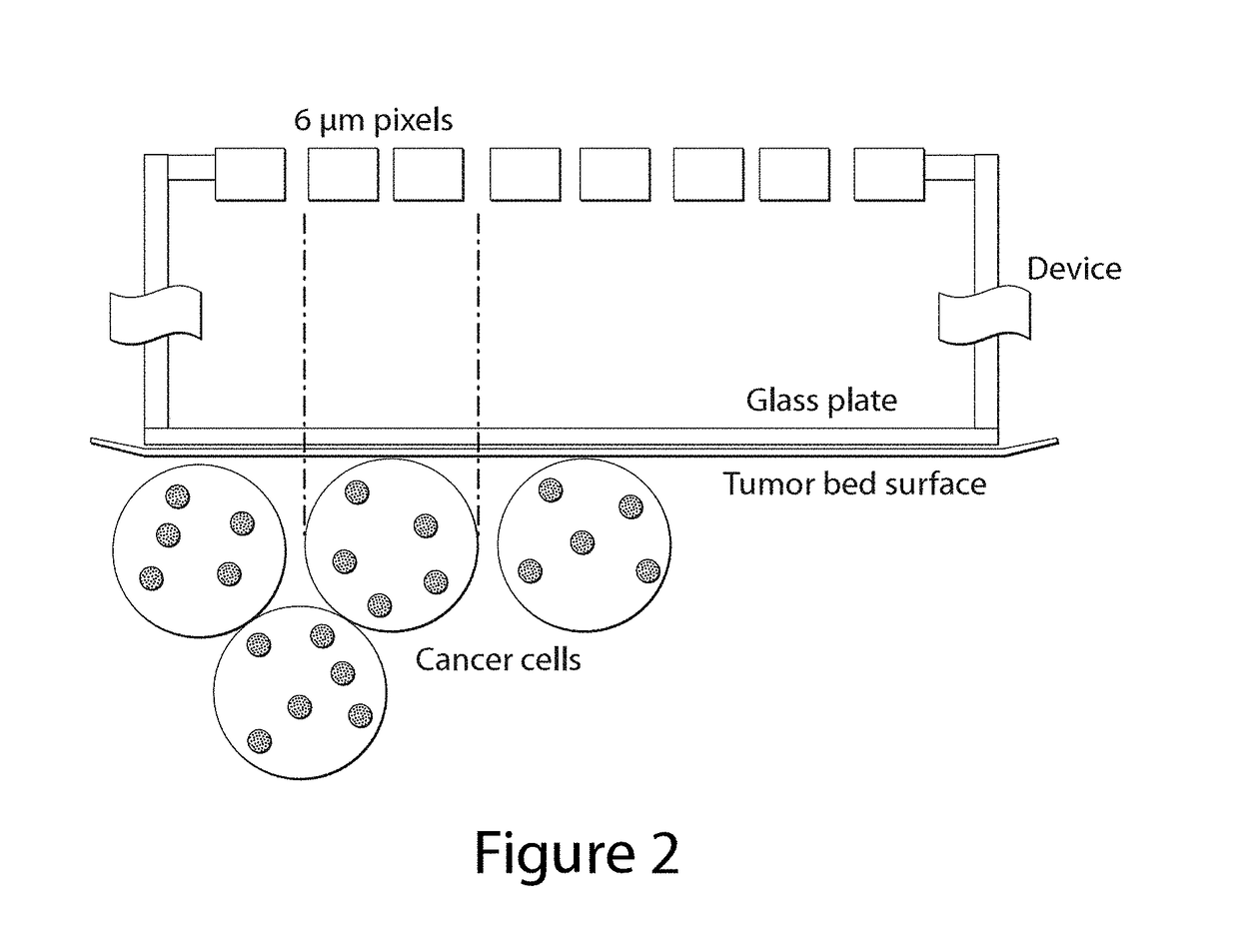Imaging agent for detection of diseased cells
a technology for detecting cells and imaging agents, applied in the field of imaging agents for detecting diseased cells, can solve the problems of reducing survival rate, local tumor recurrence, and increasing the likelihood of metastasis, and reducing the survival ra
- Summary
- Abstract
- Description
- Claims
- Application Information
AI Technical Summary
Benefits of technology
Problems solved by technology
Method used
Image
Examples
examples
[0069]Composition A comprises compounds of formula I, which comprise a PEGylated heptapeptide covalently linked to both a fluorophore (Cy5) and a dark quencher (QSY21). The central heptapeptide provides both cathepsin substrate specificity and proper spacing of the fluorophore and quencher. The QSY21 and Cy5 functionalities are covalently attached to the α-amino terminus of the peptide and to the ε-amino group of lysine, respectively. An aminoethoxyethoxyacetyl group is incorporated into the amide backbone and the carboxy terminus of the heptapeptide is further modified by attachment of a 20 kDa methoxypolyethylene glycol (mPEG) molecule to the side chain of cysteine.
[0070]In certain embodiments, composition A is supplied lyophilized, in bulk powder form as an acetate salt. The 20 kDa methoxy-polyethylene glycol moiety has a variable molecule weight of 10%. One of ordinary skill in the art will understand that composition A comprises multiple compounds that vary in the ...
PUM
| Property | Measurement | Unit |
|---|---|---|
| near-infrared wavelengths | aaaaa | aaaaa |
| molecule weight | aaaaa | aaaaa |
| molecular weight | aaaaa | aaaaa |
Abstract
Description
Claims
Application Information
 Login to View More
Login to View More - R&D
- Intellectual Property
- Life Sciences
- Materials
- Tech Scout
- Unparalleled Data Quality
- Higher Quality Content
- 60% Fewer Hallucinations
Browse by: Latest US Patents, China's latest patents, Technical Efficacy Thesaurus, Application Domain, Technology Topic, Popular Technical Reports.
© 2025 PatSnap. All rights reserved.Legal|Privacy policy|Modern Slavery Act Transparency Statement|Sitemap|About US| Contact US: help@patsnap.com



